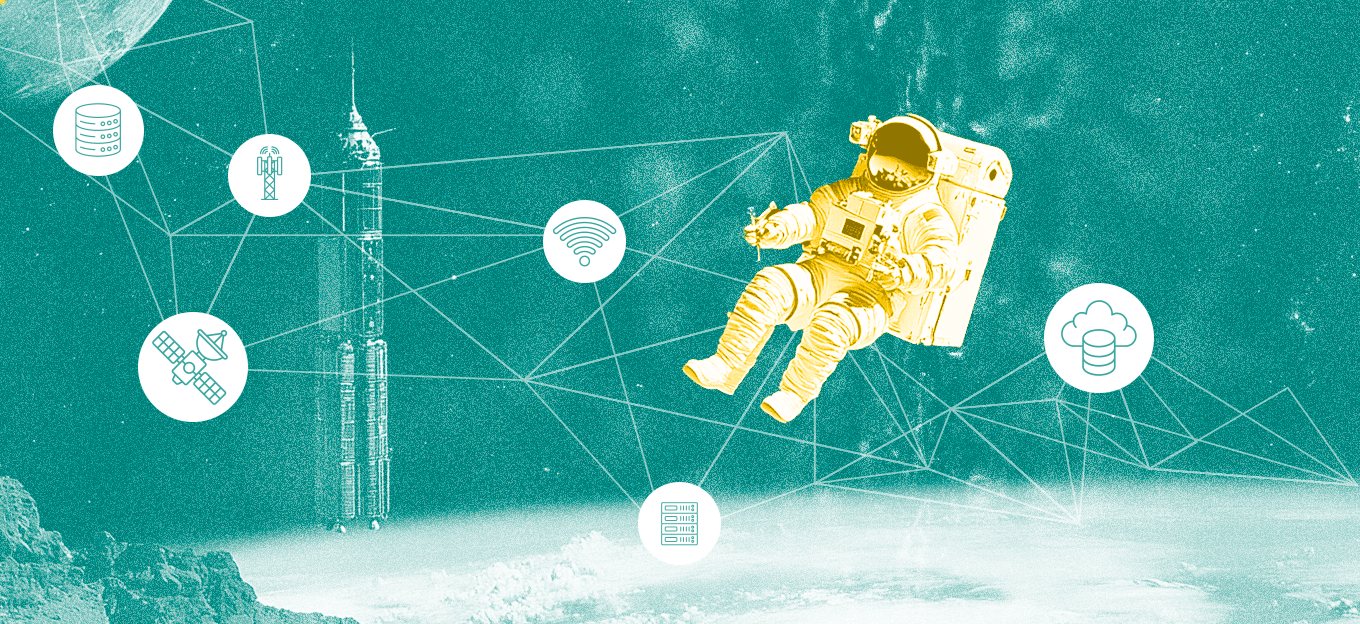
Devin Partida Last Updated: December 16, 2024
Collected at: https://www.iotforall.com/astronaut-wellness-iot
Being in space is more exhausting than being on Earth, and astronauts on missions are exposed to disrupted sleep patterns, food schedules, and exercise habits. They also work long hours and overnight to complete their tasks. The Internet of Things helps monitor their wellness to empower scientific discoveries, enhance mission quality, and create a conducive environment for astronauts.
Wearable Biometric Devices
Scientists have created a wearable device to monitor and troubleshoot health issues these astronauts face. It monitors five critical areas, including sleep patterns, medical needs, and radiation. It has an accelerometer and a gyroscope for advanced movement detection, temperature and infrared sensors that detect activities of the heart and lungs, and electrics on the skin that point to the nervous system.
The smartwatch is designed to be convenient for daily use and not interfere with the astronaut’s tasks. It is energy-efficient, easy to use, and advanced for intricate data processing and storage in the cloud via Bluetooth. The analysis then provides valuable insights into the astronaut’s health and provides solutions if necessary.
Environment Control and Life Support System
The Environment Control and Life Support System (ECLSS) is a comprehensive system that optimizes the cabin’s conditions and promotes a safer environment for astronauts. This system has three parts:
- Water recovery system: The system reclaims 90% of astronauts’ urine and sweat in the cabin and astronauts’ suits to optimize resources during missions. The water goes through a stringent purity process before it is safe for consumption.
- Air revitalization system: It cleans the cabin air by removing carbon dioxide and other contaminants from respiration and electronics usage.
- Oxygen generation system: It produces oxygen for the crew to breathe. This is done by making the oxygen necessary and reducing carbon dioxide from the environment.
In addition, the ECLSS removes filter wastes and microorganisms from the air and preserves humidity, temperature, and pressure. It also cleans toxic gases like ethanol that can collect in the cabin over time and pose dangerous health risks to crews.
Tablet-Based Application For Nutrition Monitoring
Due to microgravity, astronauts can lose muscle mass faster in space than on Earth. This implies the need for proper nutrition and a balanced diet during missions. Traditionally, these data were collected via questionnaires and manual photo uploads, but manual reporting processes compromise efficiency and accuracy, wasting valuable time that can be used for mission tasks.
To improve automation, scientists have created a tracker app to monitor diet intake that focuses on various elements of nutrition — such as carbohydrates, protein, fat, iron, and sodium — and can be accessed via iPad in space. Cabin crews can scan the barcode on the food package with the camera and log the meal and the amount of water consumed.
The app also logs all the food available in the space station, so astronauts can simply click on the item they’re about to consume or snap a picture to update the list. It connects to wearable sensors that detect heart rate, sleep, and exercise and sends this data to nutritionists on Earth who provide suggestions to improve food intake. It also offers health insights to the cabin crew.
Smart Shirts
Monitoring tech is being developed to mimic shirts to reduce the number of machines and tech worn by astronauts. These shirts can collect data on cabin crews’ heart rate and respiratory biometrics.
In addition, research is ongoing on smart biometric fabric sensors that allow heart rate and sweat biochemical analysis to be tracked. These materials and sensors must be lightweight, durable, and reliable.
Limitations to the IoT in Astronaut Wellness
These IoT devices aren’t ready to monitor astronauts just yet. One of the major issues researchers must first tackle is ensuring the materials they’re made of can tolerate space. Radiation and extreme temperatures could cause damage, skewing the machinery’s readings or disconnecting them from Earth altogether.
There’s also the matter of ensuring the systems are constantly online, which could be an expensive endeavor. Like any technology, the satellites that transmit this data are prone to aging and physical damage. To prevent downtime, facilities must be ready to launch a replacement if one receives a massive blow. Additionally, they must account for the cost of regularly launching satellites to relieve those slowly losing power.
Because these wellness devices are now being brought online, cybersecurity becomes a vital factor to note. It’s stressful enough to deal with a ransomware cyberattack. Now, imagine astronauts’ lives are also on the line because a hacker was able to jump through the systems to a mission-critical area. Before the IoT becomes the new standard in space exploration, health monitoring, stable data transfer, expense, and cybersecurity require greater research.
The IoT Sets New Standards for Astronauts’ Well-Being
As the IoT technology grows, more significant discoveries will pave the way for a better environment and support system for space travelers, opportunities for longer missions further away from the Earth, and improved conditions on board the shuttles and the ISS.

Leave a Reply